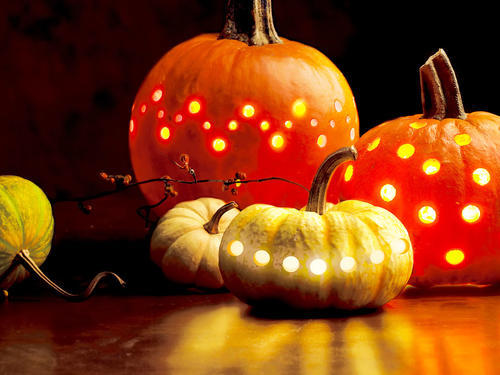Trick or Treat? Halloween's round the corner, so let's take a look at the history of Halloween, the ancient pagan festival that is now celebrated in many parts of the world! |  |
 | Halloween travelled to the USA with Irish, English and Scottish immigrants. In some of these communities, children would do 'guising', or going door to door, begging for 'treats' like candy or money. Householders who refused to indulge them would be at the receiving end of pranks. 'Guising' remained an isolated practice in America in the early 1900s, but took off from the 1920s and later, in the mid-20th century. Trick-or-treating evolved into an established 'ritual' and elaborate Halloween parties, fuelled by stores mass producing Halloween costumes, became the norm. The Jack-o'-Lantern, a grinning, carved pumpkin lit inside with a candle, is another Halloween staple with several Celtic legends attached to it. In one myth, Jack was a thief being chased by irate villagers when the Devil appeared, declaring the end of his life. But Jack used a ruse to trap the Devil and later let him off in exchange for never taking his soul. When Jack eventually died, he could neither go to heaven, as he had sinned too much, nor could he enter hell. Doomed to wander, he asked the Devil for help in finding his way. |
The Devil threw him an eternally glowing ember from Hell. Jack carved out a turnip and placed the ember within it, using it to light his way as he roamed the Earth endlessly, thereby earning himself the name, 'Jack of the Lantern'. From simple, pagan beginnings, Halloween celebrations today stretch to lavish parties, with appropriately creepy décor and music, themed menus and elaborate Halloween costumes for witches, ghosts, devils, vampires and zombies, all for a night of spooky fun! | |